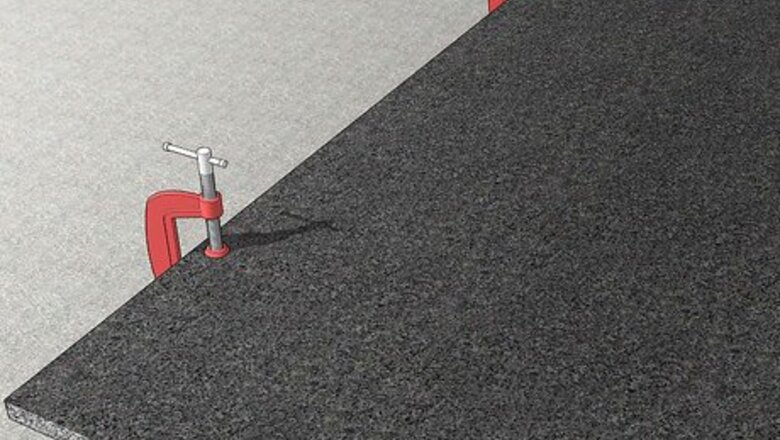
views
Securing and Measuring a Countertop
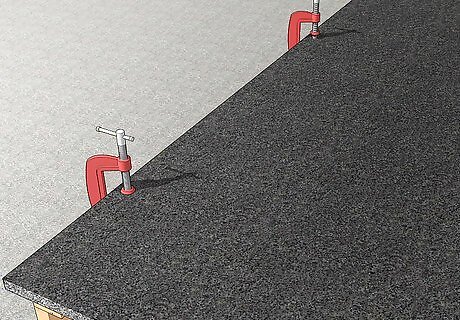
Clamp the countertop to a workbench or another stable surface. Add clamps every 2 to 3 ft (0.61 to 0.91 m) along the sides of the countertop. Get the slab to stay as still as possible to reduce the risk of chipping it while you cut it. Test your setup by shaking the workbench and countertop a little. If the countertop seems to move easily, add more clamps to pin it down. If you don’t have a good, stable surface to place the countertop on, try setting it atop some 2 ft × 4 ft (0.61 m × 1.22 m) pieces of lumber on the ground.
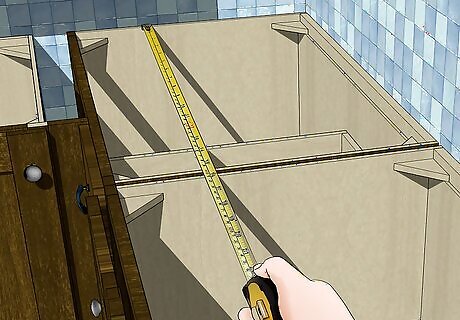
Measure the space you have available for the countertop. If you haven’t already, figure out what size the countertop needs to be. Pick a spot in your home for the countertop, then use a tape measure to gauge the available wall space. Also, measure out from the wall to determine the countertop’s width. If you are replacing an old countertop, use it as a sizing guide. Measure its length and width after you finish removing it from your home.
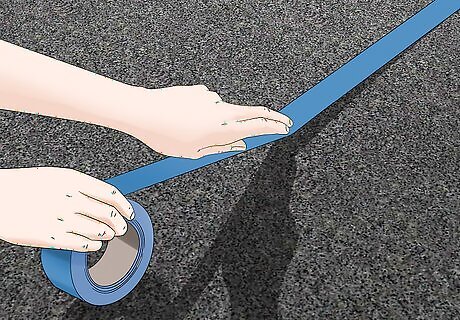
Lay painter’s tape over the area you wish to cut. Spread a piece of tape across the table to use as a guide for your saw. The placement doesn’t have to be perfect, but the tape needs to be in the right spot so you can cut through it as you cut into the table. It serves as a clever way to protect the granite from the blade, reducing the chances of chip damage. For example, if you’re cutting across the countertop’s length, lay a single strip of tape all the way across it. Try to place it exactly where you plan on cutting. If it isn’t 100% accurate, lay down additional tape to cover the cutting area. Pick up painter’s tape and the other tools you need online or at a local hardware store.
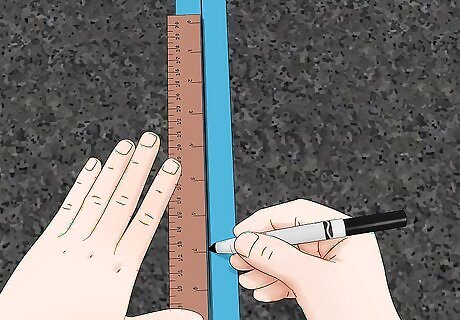
Sketch a cutting outline on the tape with a pen. Use a pen or another dark marking tool to draw directly on the tape. Measure carefully! This line is what you refer to as you operate the saw, so make it as accurate as possible. If you’re making space for a sink or cooktop, keep in mind that these features usually come with cardboard templates you can trace on the countertop. Use the template for a more accurate cut! Check your measurements a second time before you move on. Take your time to ensure your outline is perfect. Making a mistake could ruin your countertop.

Put on a dust mask, safety goggles, and earplugs. Cutting granite creates a lot of dust and noise, so take some safety precautions before turning on your saw. Avoid gloves, jewelry, or long-sleeved clothing that could get caught under the saw. Also, ventilate your area if you have the option to do so. Open nearby doors and windows, then turn on any ventilation fans you have available. Working outdoors is the best bet to prevent the dust from getting all over your home. If you have to work indoors, ventilate and use a feather duster, dust vacuum, or wet cloth to clean up. Keep other people out of the area until you are finished cutting and cleaning up.
Using a Dry Circular Saw
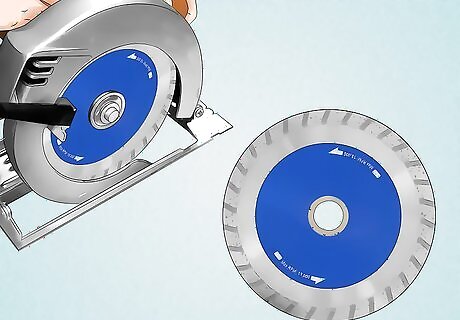
Fit a diamond-tipped blade into a circular saw. When cutting stone, regular metal blades won’t do. Select a blade carefully to protect both the granite and your saw. Try using a standard 7 ⁄4 in (18 cm) circular saw with a 7 in (18 cm) diamond blade. Make sure the blade is labeled specifically for use on granite to minimize the risk to your countertop. Blades for ceramic and other types of materials can’t cut through granite. Diamond-tipped blades are a little pricey, but they’re worth using for this project. When visiting your local hardware store, make sure you get a blade that specifically says it's designed to cut granite countertops. If you end up using the wrong blade, you could actually potentially risk damaging your beautiful stone.
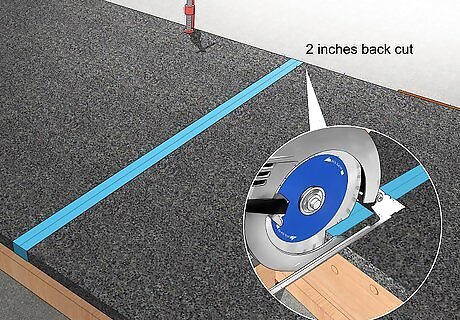
Make a small 2 in (5.1 cm) back cut with the saw. Align the saw blade with the cutting guideline you made, then begin sawing into the granite. Start at the edge of the table and slowly cut along the tape. This will create a small starting point that helps stabilize the granite as you continue working on it. Since granite is prone to chipping, take the time to make this additional cut to reduce the risk of damage to the countertop.
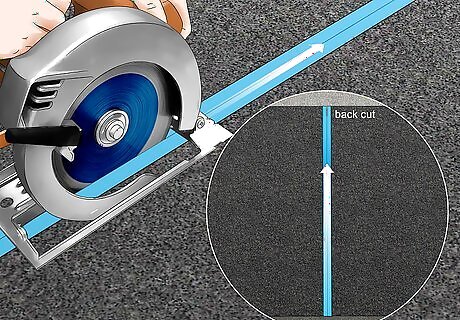
Use the saw to complete the cut from the opposite end. Go around to the other side of the countertop, then begin cutting along the outline you traced on the tape. Work slowly, holding the blade to the granite with a light amount of pressure. Focus on keeping it on the guideline. This part can take a while, but it’s worth it for a perfectly-cut countertop. As long as you hold the saw steady, it will cut through the tape and granite with relative ease. You don’t need to force it at all. Forcing it may cause it to tear chunks of granite off the countertop.
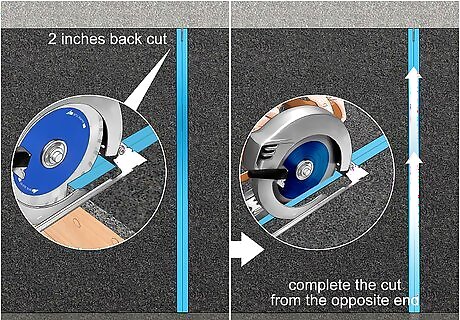
Repeat the process with any additional cuts you need to make. Finish trimming the countertop to size by starting with back cuts before switching to the opposite end of your guidelines. Each cut can take as long as 15 minutes to complete, so don’t rush. Take your time to get a countertop with smooth, unbroken edges.
Making Utility Holes with an Angle Grinder
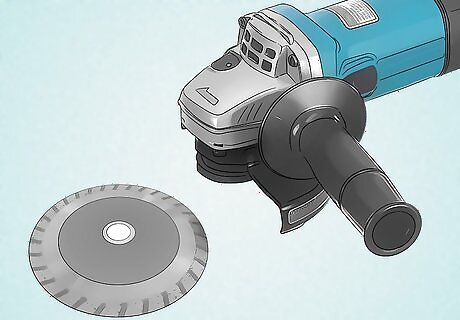
Fit a diamond-tipped blade onto an angle grinder. Use an angle grinder for a way to slice a hole into a solid countertop. An angle grinder is a versatile tool that resembles a handheld electric saw. You will need a strong blade, usually about 4 in (10 cm) in diameter, labeled for use on granite. Angle grinders are often used for cutting and polishing strong, abrasive materials like stone, but you still have to be careful when selecting the correct cutting wheel. If you choose the wrong one, you could damage the tool as well as your countertop.
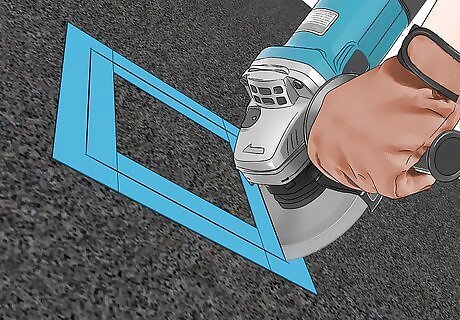
Lower the blade onto the guideline you wish to cut. Keep the blade close to the edge of the line, being careful to avoid cutting past it. As you hold the blade perpendicular to the countertop, cut down into the tape and through the granite. Then, begin moving the blade along the guideline to complete the cut. Remember that it’s better to cut within the line if you need to, since you can always cut away the extra granite later. If you cross over the line, you will end up cutting into the part of the countertop you wish to keep and that can’t be fixed.
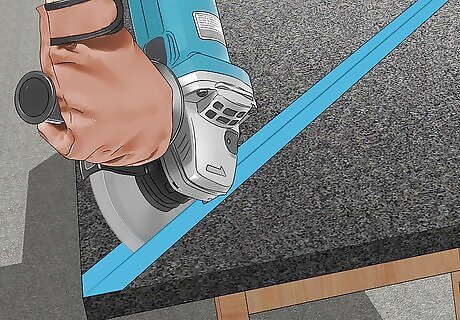
Cut diagonally across rounded corners to make them easier to finish. Once you make the initial cut, the rest of the work is simple to complete. Hold the blade steady with light but consistent pressure as you head toward the corners of the outline. When you get close to a corner, cut across the stone to the adjacent edge of the outline. Making straight lines is much easier than trying to cut around a curve, so this will help you get a better-looking countertop. A slow and steady pace makes for a good countertop. Trim away the stone instead of trying to force the blade to eliminate large chunks of it.
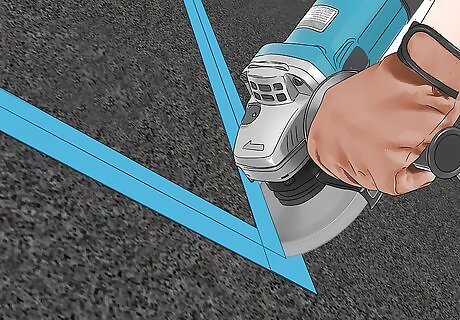
Trim the hole as needed by cutting along the outline again. Go back around the hole, cutting it until it’s even with the outline you drew during the measurement phase. Chances are the hole won’t be big enough after the first cut, especially if you were cautious with it. Widening it is a simple process, however. Repeat the cut with the angle grinder until the hole is sizeable and consistent. For the rounded corners, cut from the center of the hole to the edges of the outline. Move the blade in straight lines to slice off small chunks of the granite each time. Eventually, you will end up with perfect, round corners.
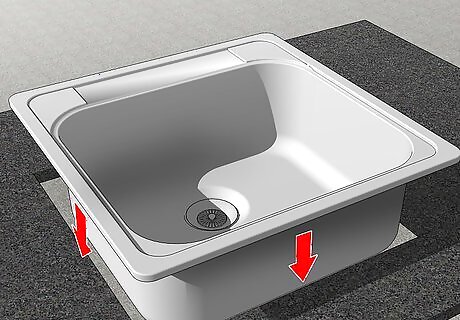
Fit the appliance into the countertop. If you have a drop-in sink or cooktop, lower it into the hole you cut. Otherwise, raise it up from underneath the countertop. Make sure it fits perfectly before you secure it in place with a silicone sealant. If you measured well enough when sketching the cutlines, you won’t need to make any extra adjustments. Sometimes the hole is smaller than you need, but you can even out the edges with an angle grinder. You can’t fix a hole that is too big, so cut with caution!
Using a Wet-Cut Saw or Grinder

Choose a wet-cut circular saw with a diamond-tipped blade. A wet-cut saw is a type of circular saw with an attached nozzle that shoots a jet of water at the granite as you cut it. Although you still need a diamond blade designed for use on granite, the saw reduces the amount of dust released as you make the cut. If you don’t mind the potential mess from spilled water, use a wet-cut setting to reduce the wear and tear on your saw and blade. You could also use a regular circular saw or angle grinder while spraying water onto the countertop. If you’re careful to avoid electrical shock, this is easy to do without buying a wet-cut saw.
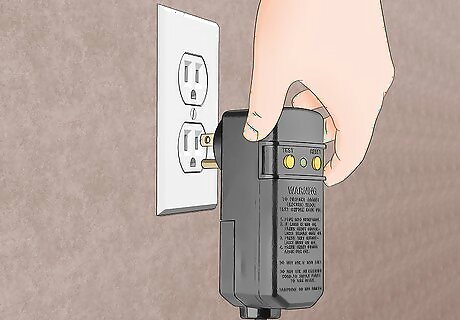
Plug the saw into a ground-fault circuit interrupter (GFCI) outlet. Set up your workstation near a special outlet than can deactivate if needed to prevent an electrical shock. A GFCI outlet has a red “reset” button on it that pops out when the circuit gets overloaded. You can then look for any problems and press the reset button when you’re ready to continue operating the saw. If you can, plan on cutting the countertop outdoors, using an extension cord as needed to connect to the outlet. If you don’t have a GFCI outlet available, use the dry-cut method instead to eliminate the risk of shock.
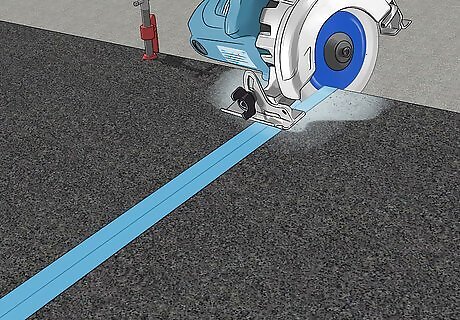
Slice into the countertop along the outline you drew. Fit the saw over the outline you drew on the tape. Use the line to guide your saw all the way around the countertop. Instead of pushing the saw forward with force, hold onto it with a light amount of pressure. Guide it gradually over the lines to get perfect, smooth cuts. Work slowly and make sure you cut where you need to. You can’t put back anything you remove, so you could ruin a good countertop if you’re not careful. If you’re cutting a hole, such as for a sink, cut diagonally across rounded corners. Come back and trim off the excess granite once you’re finished making the rest of the hole.
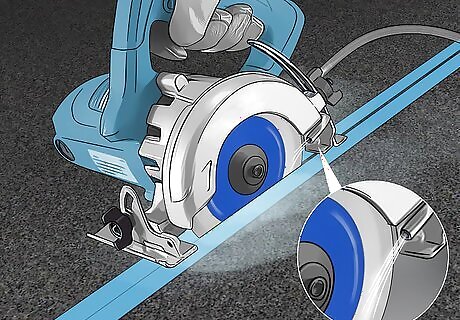
Spray the saw blade to keep it moist as it works. The water is what makes a wet cut different from a dry one. If you’re using a wet-cut circular saw, its nozzle will spray water automatically as you use it. Keep the taped area and saw blade well-soaked, but make sure the water doesn’t reach the saw’s electrical cord or motor chamber. If you’re using a regular saw or angle grinder, you will need a hose, spray bottle, or something similar. Have someone else add the water to make the process easier. Expect some standing water on the countertop. As long as you keep the saw’s motor above the water, you won’t have any problems. Avoid standing in any puddles of water and keep the cord behind you to eliminate the risk of shock.
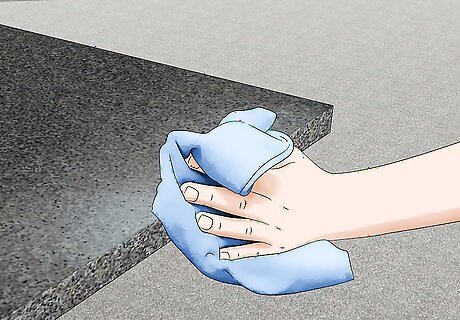
Wipe the cut edges off with a damp rag. Wet-cut saws leave a moist paste of granite fragments on the countertops. It’s very easy to remove with an old rag dampened in cold water. Clean off the countertop and your workspace. If you worked outdoors, wash away any fragments on the ground with a spray of water from a garden hose. Be careful of the standing water left from the cutting process. Move the saw out of the way, then wipe it up before you begin installing the countertop or its features.




















Comments
0 comment